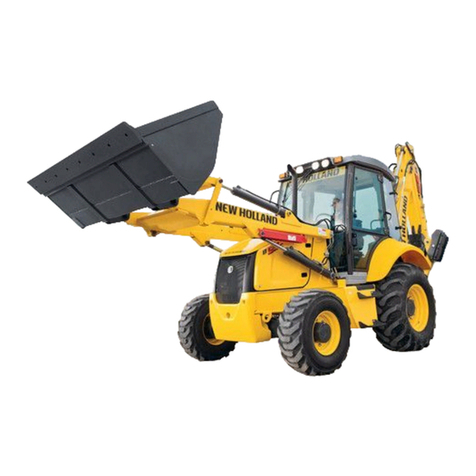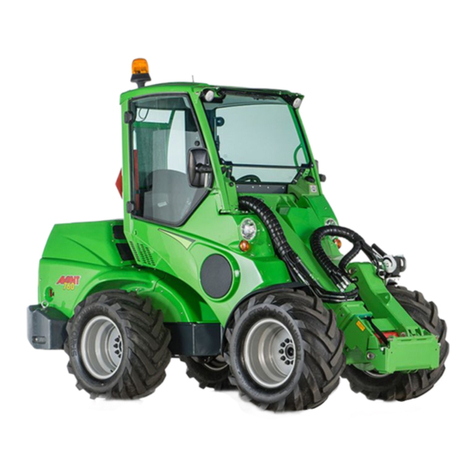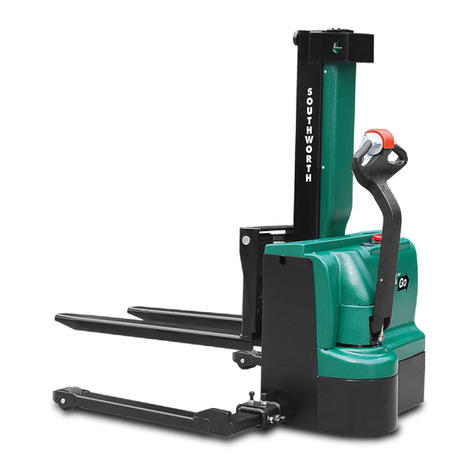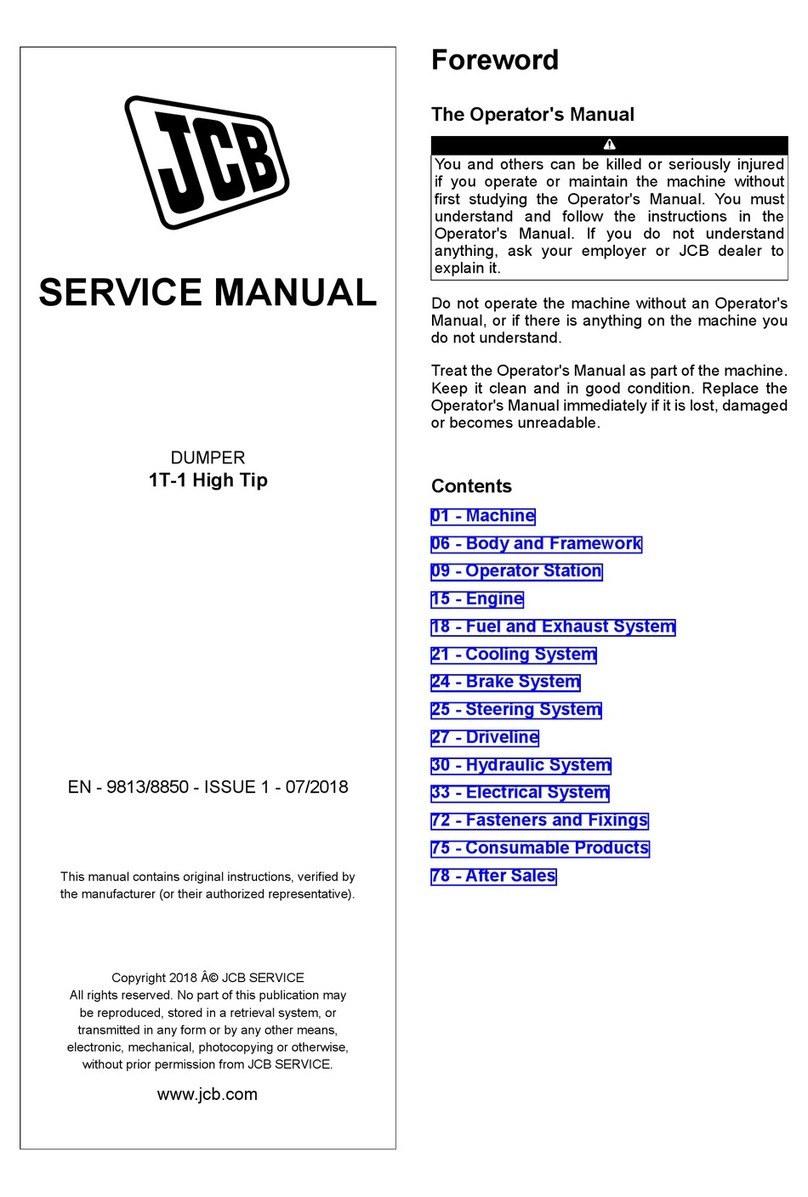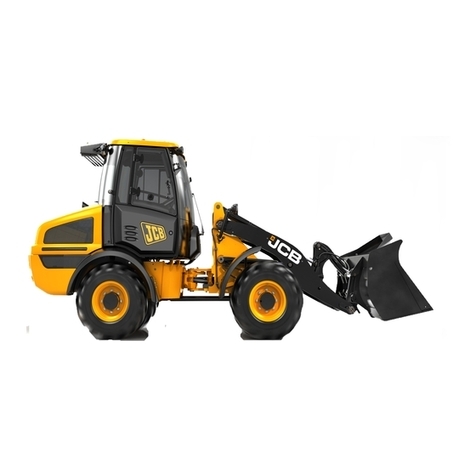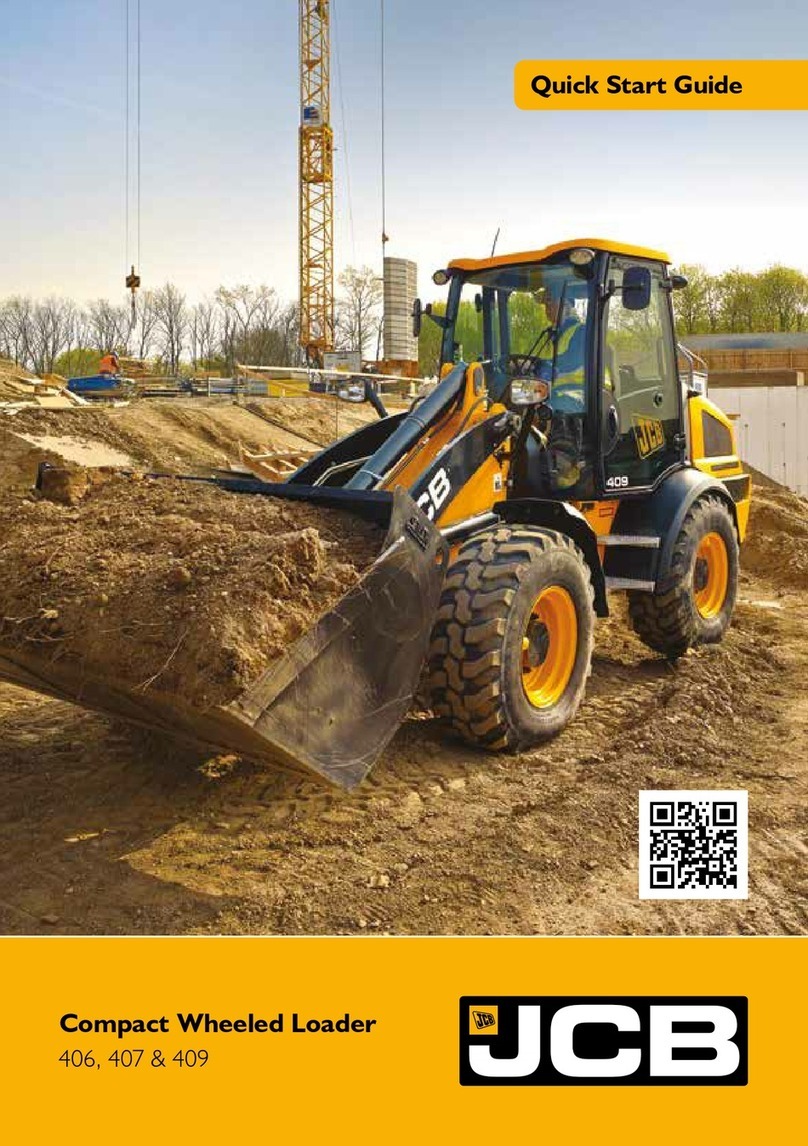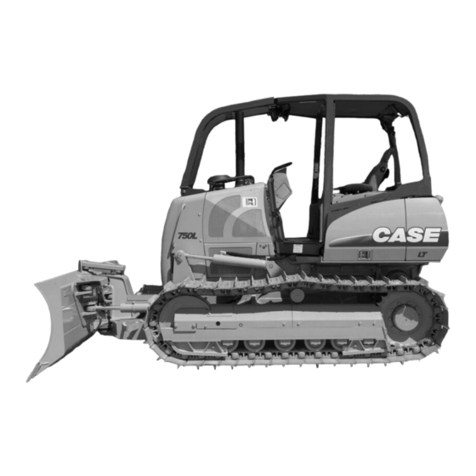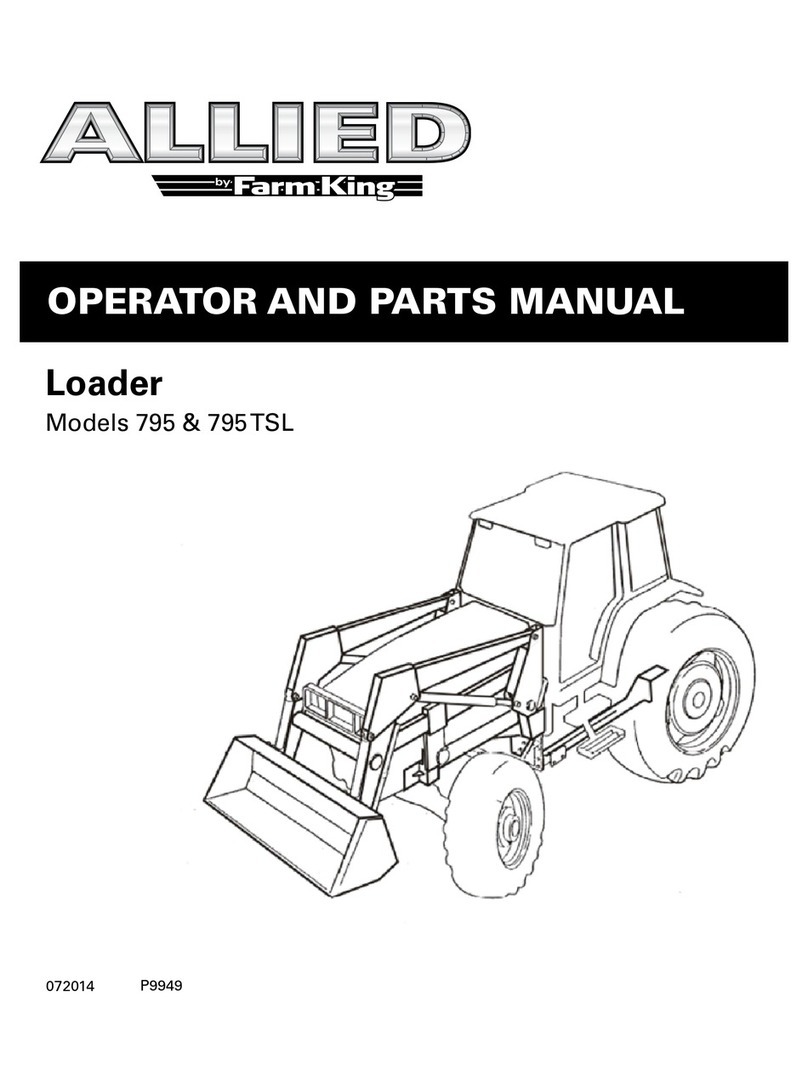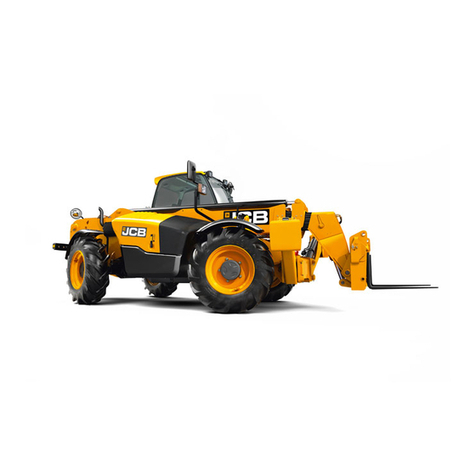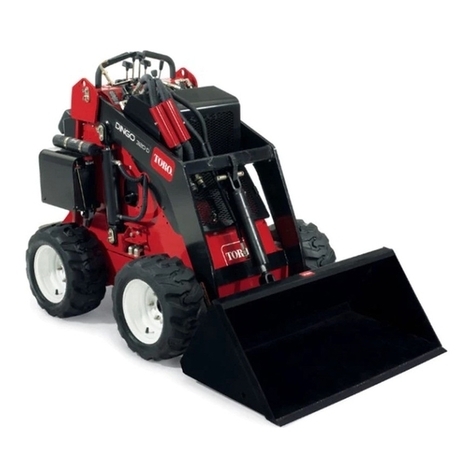MERLO P25.6 User manual

INSTRUCTION MANUAL
PAN25-07 (AU)
CHASSIS
(AU)
KEEP THIS MANUAL WITH THE MACHINE AT ALL TIMES
P25.6
Solo 3 moduli
C6184487
Solo 3 moduli
Solo 3 moduli
M3-ZM2-03 (EN)
M2-P256-AU-01
87
TRANSLATION OF THE ORIGINAL INSTRUCTIONS

04/2017
PUBLICATION DATE

INDEX
INTRODUCTION ..........................................................................................................................................................1
MACHINE TECHNICAL SPECIFICATIONS ................................................................................................................2
STICKERS WITH CONTROL DESCRIPTIONS - LEAFLETS IN THE CABIN............................................................3
CONTROLS AND INSTRUMENTS..............................................................................................................................4
OPERATING INSTRUCTIONS.....................................................................................................................................5
ORDINARY MAINTENANCE .......................................................................................................................................6
SECURITY PERIODICAL INSPECTIONS...................................................................................................................7
ATTACHMENTS AND OPTIONAL EXTRA.................................................................................................................8
HYDRAULIC CIRCUITS' DIAGRAMS .........................................................................................................................9
ELECTRICAL SYSTEM .............................................................................................................................................10


1 - INTRODUCTION
1 - 1
INDEX
GENERAL NOTES .........................................................................................................................................................................2
SCOPE OF USE OF THE MACHINE .............................................................................................................................................2
OPERATOR MANUAL....................................................................................................................................................................2
WORK ENVIRONMENT.................................................................................................................................................................3
FIRST COMMISSIONING OR RECOMMISSIONING AFTER A LONG SHUTDOWN....................................................................3
MACHINE GARAGING...................................................................................................................................................................3
TYRES............................................................................................................................................................................................3
ORIGINAL MERLO SPARES .........................................................................................................................................................4
MACHINE SCRAPPING.................................................................................................................................................................4
GUARANTEE .................................................................................................................................................................................4
ORDINARY MAINTENANCE OPERATIONS..................................................................................................................................4
DRIVING THE MACHINE ON PUBLIC ROADS .............................................................................................................................4
SAFETY AND ACCIDENT PREVENTION MEASURES.................................................................................................................5
FIRE PREVENTION MEASURES ..................................................................................................................................................6
AS1418.19 COMPLIANCE .............................................................................................................................................................6
END OF CHAPTER........................................................................................................................................................................7


1 - INTRODUCTION
1 - 2
GENERAL NOTES
This manual refers to AS1418.19
This machine has been designed and manufactured according to MERLO specifications. In order to avoid accidents and
ensure the best performances over time, the machine must not be modified or altered in any way and all safety rules, as well as
the general operation instructions described in chapter "SAFETY PREVENTION MEASURES” of this instruction manual shall
be respected.
Any change made to either the machine or its attachments by subjects other than Merlo S.p.A. shall forfeit the manufacturer's
liability and suspend warranty. Any civil or criminal consequences shall fall on the subject who has made the change.
All information, images and specifications contained in this manual are based on the updated product at the time of publication.
MERLO S.p.a. reserves the right to make all the necessary changes it will deem necessary with no prior notice.
Entrust the machine only to qualified and skilled staff whose characteristics are compliant with existing legal requirements. The
non observation of what indicated by this document may cause personal or material damage.
Both machine and loads handlings must be carried out in a people-free range.
SCOPE OF USE OF THE MACHINE
This machine is designed and manufactured for agricultural and industrial applications. Any use in other sectors is to be
considered not compliant with its scope of use.
Compliance and strict adherence to Manufacturer's specifications for use, storage and maintenance are also fundamental for
the scope of use of this machine.
This machine shall be used by qualified, skilled and authorized personnel only. Operators shall be familiar both with the various
components of this machine and with the safety procedures to be followed if the need arises.
Any arbitrary changes made to this machine without prior written authorization from the Manufacturer exempt Merlo S.p.A. from
any civil and/or criminal liability.
OPERATOR MANUAL
Before using your MERLO machine, it is necessary to carefully read the OPERATION AND MAINTENANCE MANUAL to fully
understand all the operation, maintenance and safety information it contains.
The operator's manual is an integral part of the machine, it shall be written in a language spoken or at least understood by the
operator and be held in the document holding pocket behind the driver's seat, so that it can be consulted at any time. Should
the manual be damaged or made illegible in any of its parts, please order a new copy to Merlo Technical Support, by providing
the identification code written in the bottom left-hand corner of the front page.
The stickers and leaflets found on the machine must always be present and accessibile to the driver. Should these be
unreadable, damaged or missing, it is necessary to order them again from the Merlo Technical Support Service indicating the
overprinted code or referring to chapter "ADHESIVE CONTROL LABELS" of the machine operator manual.
If the machine is fitted with special applications supplied under specific customer request, which are not included in the official
list of accessories, the related instructions can be found in the last page of this manual.
Any device and/or label found on the machine and not described by the present manual is related to applications istalled under
specific customer request; in this case the specific operating instructions shall be supplied separately.
The complete or partial reproduction of the Merlo operator manual is forbidden.
SYMBOLS USED IN THE MANUAL
The operator manual contains some graphic symbols which help the user understand the importance of instructions and
highlight any specific precautions to be taken or general notes:
WARNING!
This symbol indicates important messages aimed at ensuring driver and vehice safety. In such cases it is
necessary to carefully read the text following the symbol and strictly follow the instructions given.
NOTE!
This symbol preceedes a closer description of an instruction and aims at highlighting a part of the text.
HEXAGONAL KEY
This symbol is used to identify the dimension of the key to be used for some operations described in the
manual.
The type of key is indicated only if different from the standard one.
Only use ISO sockets or wrenches. The number inside the symbol is in millimeters.
OPERATOR MANUAL SYMBOL
This symbol is shown on some machine plates and warns the operator that the explanations contained in the
Operator manual shall be carefully read before using the control.

1 - INTRODUCTION
1 - 3
WORK ENVIRONMENT
The machine manufactured by Merlo S.p.a., are designed to be used within the following environmental temperature ranges:
- minimum temperature: - 20°C (-4 °F)
- maximum temperature: + 40°C (100°F)
Special applications may be provided upon request for particularly cold or hot environments.
A single fire extinguisher should be fitted on the machine when the workplace does not have external fire extinguishing
equipment and the risk of fires exists.
Always take the atmospheric and climatic conditions of the workplace into account.
The machine is supplied with a leaflet stating the maximum permissible wind under normal operating conditions. Before using
the machine read the table showing the Beaufort scale to estimate wind strengths, so that you can check whether there are the
right conditions to ensure safety when working at a certain height.
Please note that the maximum permissible value is 12.5 m/s (28 mhp) (level 6 on the "Beaufort scale").
Merlo machines are fitted for outdoor use.
When using them in closed, underground environments or in places where a risk of explosion exists, special equipment can be
fitted on the machine. These shall be defined when ordering the machine and its attachments.
FIRST COMMISSIONING OR RECOMMISSIONING AFTER A LONG SHUTDOWN
Before operating the machine for the first time, or after a long shutdown, the following operations shall be carried out:
- check that the machine is not damaged
- check that the mechanic parts of the machine are in prime condition, and not rusted
- check both the engine coolant level and the coolant level for the service hydraulic system
- check the tire wear level
- check that the lights and the electrical equipment work correctly
- check for any oil leaks from the unions or the pipes of the hydraulic system
- check both the battery electrolyte level and the battery charge
- check that all protection devices are in their correct positions
- thoroughly grease all the mobile parts of the machine
MACHINE GARAGING
If the machine needs to be shut down for a prolonged period of time, it shall be garaged in a place where it is not exposed to
atmospheric agents, and it shall be protected to avoid any damages.
Before being garaged, the machine shall be cleaned down and all its mechanical parts shall be properly lubricated to prevent
rusting.
Check that the temperature in the garage ranges between 0°C (32°F) and 50°C (120°F). For temperatures below 0°C (32°F),
but not below -29°C (-20°F), check the density of the antifreeze in the engine cooling system. The main operations to be carried
out before garaging the machine for a prolonged period of time are listed below. Please follow these instructions:
- clean down the whole machine.
- perform a general visual inspection of the machine, so that you can identify any structural damage and/or deep abrasions
on painted surfaces.
- perform a general visual inspection of the machine, so that you can check whether all safety plates and stickers are in place
and in prime condition. Replace the damaged or illegible plates and/or stickers with new ones, to be ordered from the Merlo
Technical Support Service.
- lubricate and grease all mechanical parts, as well as all the pins exposed to the air.
- garage the machine in a sheltered place, and park it on a flat, compact surface.
- apply the parking brake.
- take the engine start key out of the dashboard, lock the cab door and store the key in a safe place.
TYRES
Only use tyres approved by Merlo S.p.a.
If tyres are deteriorated or show excessive wear, they must be replaced with new tyres with the same characteristics.
Fit tyres suited to the surface of work - several types of tyres exist (for agricultural or industrial use, sandy terrains etc.). If
needed, or in case of abnormal wear, contact your dealer.
Do not fit polyurethane-filled or fluid-filled tyres if not explicitely authorised by Merlo S.p.a.
WARNING! The list of authorised tyres which may be fitted to your machine is provided in the paragraph
FEATURES AND PERFORMANCES in the TECHNICAL DATA section.
If it is necessary to replace one type of tyre with another model (included in the list of authorised tyres), first contact
Merlo's Technical Support service since replacing the tyres may also require replacement of the electronic control unit
managing safety and load tables.

1 - INTRODUCTION
1 - 4
ORIGINAL MERLO SPARES
Maintenance operations on Merlo machines shall be carried out only with original and approved spare parts. In this way, the
customer is legally covered and has the following advantages:
- guaranteed quality of spare parts
- guaranteed training of the technical staff
- support in preventive maintenance operations
- support in diagnosis operations
If NON original Merlo spare parts are used, the customer runs the following risks:
- from a technical point of view, this may damage or cause general operation problems to the machine
- from a legal point of view, the customer may be deemed directly liable in case of accidents
- from an economic point of view, any claims for repairs carried out in the warranty period (materials and labour) may be
rejected.
In this case Merlo S.p.A holds itself free from any liability, and the warranty terms on the machine shall no longer be applicable.
Finally, only Merlo S.p.A has all the technical and engineering know-how which ensures maximum expertise in the
maintenance if its machines.
MACHINE SCRAPPING
When the machine is scrapped, it shall be disposed of in proper dumps, in compliance with the law as it stands. Before
scrapping the machine, sort out plastic or rubber parts, as well as electric or electronic parts, from other components. Recover
used oil and dispose of it in proper collection centres.
Parts which are solely made of plastic, aluminium or steel can be recycled if they are collected in proper collection centres.
IMPORTANT! Used oil shall be properly recovered, and not be released into the environment. Current
legislation classifies it as a hazardous substance, therefore it shall be disposed of in proper collection centres.
GUARANTEE
To benefit from the Manufacturer's guarantee, the operator shall take all the precautions described in the Operator's Manual,
with particular reference to the following:
- obey the prescriptions and restrictions provided by the Manufacturer for machine operation
- never make any changes to the machine without prior written authorization from the Manufacturer
- always carry out all the maintenance operations prescribed by the Manufacturer
- always use Merlo original spare parts
- make sure that the staff operating the vehicle have the necessary skills and are properly trained.
The Manufacturer's guarantee shall not apply if the conditions above are not met, or are only partially met.
If spare parts which are not approved by the Manufacturer are used, any guarantee shall be made void and the Manufacturer
shall be exempt from any liability for malfunctions or accidents.
If safety devices are either removed or altered, the Manufacturer shall be exempt from any liability for damages to property
and/or people.
ORDINARY MAINTENANCE OPERATIONS
In order to ensure that the machine is used in maximum safety, reliability and efficiency conditions, it is key to regularly carry
out all ordinary maintenance operations following closely the instructions provided by the present operator manual.
Do not use the machine unless all maintenance operations and any necessary repair work have been executed.
Should the operator notice that the machine does not operate as it should or it does not meet all safety requirements, the
anomaly shall be immediately communicated to the person in charge.
Before carrying out any work on the machine, the engine must be stopped, the travel direction selector must be brought to its
central position and the gear selector must be in neutral gear.
Maintenance operations must be carried out by qualified and skilled staff. For any work on parts which fall outside the scope of
ordinary maintenance operations - as defined by the present operator manual - contact the Merlo Technical Support Service.
It is strictly forbidden and highly dangerous to modify any machine component thus changing its original structure. It is further
forbidden to change the hydraulic and electric setup or modify the safety systems. Otherwise, Merlo S.p.A shall be relieved
from any civil or criminal liability.
DRIVING THE MACHINE ON PUBLIC ROADS
For all information on how to drive the machine on public roads, always refer to the applicable laws of the country where the
machine is used.

1 - INTRODUCTION
1 - 5
SAFETY AND ACCIDENT PREVENTION MEASURES
IMPORTANT!
To prevent any conditions of risk, avoid accidents and injuries, minimize failures and improve the functionality and the
durability of your machine, always operate your machine correctly, obey the rules described in the following sections
of this paragraph, and take all the necessary precautions while working.
Merlo S.p.A. denies liability for any damage, accident or injury if the code of conduct described in the following sections of this
paragraph is not applied:
• CONDITIONS FOR A SAFE USE OF YOUR MACHINE
- the machine is not intended for use in sectors other than the one it was designed for; any use other than the one specified
by the manufacturer shall be considered improper.
- the machine shall be used by only one operator, sitting in the driver's cab.
- the machine shall only be used by authorized, skilled personnel. The operator shall read and understand all the instructions
provided in this operator's manual, be sufficiently trained on the correct use of the machine, and hold a driving licence.
Should the operator have any doubts on either the use of the machine or the interpretation of the manual, he/she shall
contact the Manufacturer.
- to drive the machine from one spot to another, the operator shall sit correctly in the driver's seat; if this is not the case, the
system will automatically lock the hydrostatic transmission.
- never operate the machine if you feel tired or sick, or if you are under the effect of alcohol, prescription drugs or illicit drugs.
- if you need to work either under poor visibility conditions or at night, always switch on the working lights available on your
machine. As an alternative, you can install a proper external lighting system in the area you are working in.
- any arbitrary changes made to your machine shall exempt Merlo S.p.A. from any liability for any damages or injuries to the
operator, third parties or property.
- inspect your machine very carefully before setting it at work.
- if you stop your machine on sloping ground, place wheel chocks (if present) under its wheels.
- avoid operating you machine on a muddy, sandy or soft ground.
- never use the controls or the pipes on the machine as holds; these components are mobile and cannot offer a stable grip.
- check tire inflation pressure at regular intervals, and make sure that it corresponds to the pressure value shown on the rim,
which has been determined based on the kind of soil the machine is supposed to be operated on.
- never use your machine to transport people or animals.
- never use your machine to lift people or animals.
- always refer to the load diagram of your machine, which defines the maximum load capacity depending on the extension of
the telescopic boom.
- never leave your machine unattended while the engine is still running or when loads are hanging from the telescopic boom.
- before getting off the machine and before carrying out any maintenance operations, apply the parking brake, switch off the
engine and take the engine start key out of the dashboard.
- always fasten your seat belt while driving your machine from one spot to another on a site.
• PERSONAL PROTECTION SYSTEMS
- the personnel shall use both safety devices and personal protection devices
during machine operation, servicing and maintenance. Machine operators
shall avoid wearing jewellery or loose clothes that may get caught in
machine parts or gears.
- if you usually work in particularly dusty or dry environments, you are
advised to inspect the filters of the cab ventilation system periodically and
to wear proper protection devices for you respiratory tract, such as dust
masks or masks equipped with filters.
- some individual protection devices are shown here by way of example only.
Such devices should be used by telehandler operators while working on
and servicing their machines, as described in this chapter and in chapter
"ROUTINE MAINTENANCE":
- Head protection helmet (fig. 1)
- Safety shoes (fig. 2)
- Safety gloves (fig. 3)
- Safety overalls (fig. 4)
- Safety goggles (fig. 5)
- Safety face mask (fig. 6)
- Respiratory mask (fig. 7)
- Earmuffs (fig. 8)
- such devices shall be made available by either the employer or the foreman, based on their risk assessment.

1 - INTRODUCTION
1 - 6
• MACHINE OPERATING AREA
- Before operating your machine, always check the workplace with extreme care, so as to prevent dangerous situations.
Check the lie of the land and the soil condition, so as to equip your machine with the necessary equipment for safe
operation.
- The operator shall make sure that no people or animals stand in or pass through the machine working area while the
machine is in operation.
- Avoid any accidental contact between the telescopic boom and high-voltage overhead lines; keep a minimum distance of at
least 5m (16 ft).
• SAFETY PLATES AND STICKERS
- safety plates and stickers applied on your machine provide important information; obeying the rules written on them is
essential to your safety.
- make sure that the safety stickers and plates on your machine are in prime condition. Periodically clean all stickers and
plates with a cloth dampened with a mild soap and water solution. Should stickers and plates be damaged or illegible,
replace them with new original ones, to be ordered from Merlo Technical Support Service, and to be placed in the position
shown in the Operator's Manual.
• SAFETY DEVICES
- before operating your machine, make sure that all safety devices are in good condition and placed in their correct positions;
should guards and safety devices be faulty or damaged, stop working and file a replacement/repair claim.
- it is prohibited to either remove or tamper with safety devices.
• CLEANING YOUR MACHINE
- during machine operation the operator shall have enough visibility of the working areas which are considered dangerous;
therefore, rear-view mirrors shall always be kept clean and in good condition.
- remove any foreign matter (rubble, tools, various objects) from your machine, since they may damage it or hurt the
operator.
- periodically inspect the wear level of hydraulic pipes; if they are worn out, replace them.
FIRE PREVENTION MEASURES
Follow the instructions below:
- make sure that a fire extinguisher having a proper capacity is always available on board, and refill it periodically.
- inform machine operators about the measures to be taken in case of fire.
- note that all fuels and most lubricants and hydraulic fluids are flammable.
- never smoke or set anything aflame while refilling fluids, and never pour fuel.
- always switch off the engine before refuelling.
- never refuel in poorly ventilated rooms.
- before starting the engine make sure that there are no leaks or residual traces of fuel, lubricant, or other fluids which may
cause small fires.
- short-circuits may cause fires. Periodically check the condition of the battery terminals, of cables and of the electrical
equipment.
- never store flammable substances in places which are not suitable for that purpose; never prick or burn pressurized
receptacles or spray cans; never let materials soaked in flammable substances accumulate.
- be careful where you store cloths or materials soaked in flammable substances.
- to minimize spontaneous ignition risks, periodically clean the machine with proper devices (either a high-pressure water jet
cleaner or compressed air).
- use appropriate fire extinguishers: carbon dioxide extinguishers, foam extinguishers, chemical fire extinguishers.
- avoid using water jets; only use this method to cool down surfaces exposed to fire.
- never use petrol, solvents or other flammable or toxic fluids to clean mechanical parts; use commercial, non-flammable,
atoxic solvents instead.
- never make welds near tanks, pipes, cans, cables, or flammable materials in general.
- if a weld needs to be made, protect flammable parts with proper shields.
- before making a weld always disconnect both battery terminals.
AS1418.19 COMPLIANCE
Your machine complies with the safety requirements of the Australian Standards (AS1418.19) for the protection and safety of
people from potential hazards deriving form machine operation.
To ensure the operator's safety, the cabin is built in compliance with the following standards:
- ISO 3449 FALLING-OBJECT PROTECTIVE STRUCTURES (FOPS)
- ISO 3471 ROLL-OVER PROTECTIVE STRUCTURES (ROPS)
As it complies with the above mentioned requirements of the Safety directive, your machine is labeled with the AS1418.19
marking.

1 - INTRODUCTION
1 - 7
• MACHINE-PRODUCED VIBRATIONS
Your machine has been designed and built in compliance with international ergonometric standards.
The vibrations sent by the machine to the upper limbs of the operator's body are irrelevant, as the machine operation does not
require a lengthy contact of upper limbs with vibrating parts. In any case, the value of such vibrations does not exceed 2.5
m/sec² Vibrations sent from the machine to the operator's body are less than 0.5 m/sec² (RMS).
• ELECTROMAGNETIC INTERFERENCE
This machine complies with Directive 2004/108/CE on electromagnetic interference which may arise between some electronic
device on the vehicle and further external devices.
Make sure that all extra electric devices fitted on the machine comply with such standard and that they do not produce any
interference with the vehicle on-board devices.
Also, make sure they are all labelled with the specific "CE" marking.
• NOISE
AIRBORNE NOISE
This machine is compliant with Directive 2000/14/EC on "noise emission in the environment of equipment for use outdoors".
The sound power level of your machine is determined based on measurements carried out on an identical machine in
accordance with measurement methods of airborne noise generated by "combustion-engine driven counterbalanced lift trucks",
whose validity applies at the time of publication of this manual.
The following table shows the sound power level (Lwa) measured:
TYPE OF MEASUREMENT SOUND PRESSURE LEVEL
Guaranteed sound power level (Lwa) 104 dB(A)
During equipment operation, higher noise levels may be measured due to particular working conditions, the surrounding
environment and additional noise sources.
NOTE!
The guaranteed sound power level (Lwa) is also shown on a sticker applied on the inside of the cab window.
NOISE INSIDE THE CAB
Noise at the operator's ear is measured in compliance with EN 12053 standards for the "Determination of emission sound
pressure level at operator's position".
The emission sound pressure level of your machine is determined based on measurements carried out on an identical machine
in accordance with the measurement methods described in the aforementioned standards, whose validity applies at the time of
publication of this manual.
The following table shows the sound pressure level measured inside the cab (LpAZ)
TYPE OF MEASUREMENT SOUND PRESSURE LEVEL
Sound power level (LpAZ) 77 dB
Sound pressure uncertainty KpA is equal to 2 dB.
The operating cycle during measurement is as follows:
• LIFTING (a=0.18)
• IDLING (b=0.58)
• PULLING (c=0.24)
Reference items a, b, and c are coefficients proportional to time of use.
During equipment operation, higher noise levels may be measured due to particular working conditions, the surrounding
environment and additional noise sources.
END OF CHAPTER

2 - MACHINE TECHNICAL SPECIFICATIONS
2 - 1
INDEX
EXTERNAL VIEW OF THE MACHINE KEY WORDS....................................................................................................................2
CAB INTERIOR KEY WORD..........................................................................................................................................................3
(P) CONTROL PANEL KEY WORDS.............................................................................................................................................4
(P1) CONTROL PANEL KEY WORDS...........................................................................................................................................5
DASHBOARD KEY WORDS (C)....................................................................................................................................................5
DYNAMIC LOAD CONTROL DISPLAY KEY WORDS (D).............................................................................................................6
DIMENSIONS - P25.6.....................................................................................................................................................................6
LOAD CHART.................................................................................................................................................................................7
PERFORMANCE AND FEATURES .............................................................................................................................................10
SERIAL NUMBER OF THE MACHINE.........................................................................................................................................11
IDENTIFICATION AND TYPE APPROVAL PLATES....................................................................................................................11
TIGHTENING TORQUES FOR ISO METRIC THREADS.............................................................................................................12
END OF CHAPTER......................................................................................................................................................................12

2 - MACHINE TECHNICAL SPECIFICATIONS
2 - 2
EXTERNAL VIEW OF THE MACHINE KEY WORDS
Please, pay attention to the identification of the machine sides, because they will be requoted in the handbook.
REF. DESCRIPTION
A Front side
B Rear side
C Left - hand side
D Right - hand side
REF.
DESCRIPTION REF.
DESCRIPTION
1 Operator cab 8 Lift cylinder of telescopic boom
2 Engine and Battery compartment 9 Forks tilting cylinder
3 Front axle - brake calipers - hub reduction gear 10 1st section boom
4 Rear axle - brake calipers - park brake caliper - hub
reduction gear 11 2nd section boom
5 Forks 12 Fuel tank
6 Carriage 13 Hydraulic oil tank
7 Load back rest 14 Binking light on the roof

2 - MACHINE TECHNICAL SPECIFICATIONS
2 - 3
CAB INTERIOR KEY WORD
REF. DESCRIPTION REF. DESCRIPTION
1 Telescopic boom control joystick and
driving direction buttons 26 Lever for air suction selection either inside/outside
the cab
7 Rear windscreen-wiper switch 27 Driving speed adjustment pedal
12 Hydrostatic transmission or hydraulic
system oil pressure gauge 28 Emergency pump for the release of the parking
brake
13 Spirit level 29 Steering selection lever
14 Accelerator pedal 34 Front windscreen wiper and screen-washer switch
15 Brake pedal 35 Heating cock
17 Steering wheel position locking lever 86 Hand accelerator
18 Air vent 203 Activation of temporary bypass switch
20 Driving direction buttons C Dashboard
21 Safety instruction and load diagram
container D Display of the dynamic attachment control
22 Steering wheel P - P1
Control panels
24 Parking lights switch/ low beam lights /
Direction indicators / head lights / Horn

2 - MACHINE TECHNICAL SPECIFICATIONS
2 - 4
(P) CONTROL PANEL KEY WORDS
REF. DESCRIPTION
5 Red warning light for anti-tilting exclusion
6 Working mode selector
8 Start key
9 Hazard lights switch (4 emergency flashing lights)
11 Portable light socket
37 Parking brake selector
40 Push button for retraction of the telescopic boom if the joystick has been damaged or during maintenance
operations on the overturn system
90 Yellow warning light for hydrostatic transmission lock out
204 Switch for the selection of the attachment type installed on the machine

2 - MACHINE TECHNICAL SPECIFICATIONS
2 - 5
(P1) CONTROL PANEL KEY WORDS
REF. DESCRIPTION
33 Cab roof indicator switch
36 Fan switch for cab heating
209 Indicator lamp showing that button (U) on the joystick is pressed (joystick enable button)
226 Adjustment buttons for instrument panel settings (C)
DASHBOARD KEY WORDS (C)
REF. DESCRIPTION
58 Cooling liquid thermometer
59 Fuel level indicator
60 Speedometer
61 Engine RPM indicator
62 LCD display - Hour counter / Clock
S Warning lights

2 - MACHINE TECHNICAL SPECIFICATIONS
2 - 6
DYNAMIC LOAD CONTROL DISPLAY KEY WORDS (D)
REF. DESCRIPTION
210 Light bar indicating the stability percentage of the machine
S1 Display showing the operating functions of the machine
P1 – P2 – P3
P4 – P5 Selection buttons / setup
DIMENSIONS - P25.6

2 - MACHINE TECHNICAL SPECIFICATIONS
2 - 7
LOAD CHART
The load charts available on your machine, and shown in this manual, provide the different load capacity ranges of your
machine when equipped with standard forks. The centre of gravity of the load being transported is calculated 600 mm away
from the fork heel. Should other attachments be used in place of standard forks, please refer to the load charts contained in the
document holder in the cab, and shown in chapter "ATTACHMENTS" of this manual.
For a better comprehension of the load chart, please refer to the example below:
• A) Maximum permitted slopes
• B) Indication of the telescopic boom lift height
• C) Name of the machine represented in the load chart
• D) Indication of the telescopic boom lift angle
• E) Indication of the extending boom sections (marked with letters)
• F) Description of the attachment installed on the carriage (forks in this case)
• G) M-CDC switch position
• H) Indication of the centre of gravity of the load being lifted
• L) Indication of the tyres to be used for this load chart
• M) Indication of the telescopic boom extension length
• N) Pick and carry informations

2 - MACHINE TECHNICAL SPECIFICATIONS
2 - 8
ATTENTION!
The load diagram for the machine on tyres refers to a machine that is standing still, with its wheels aligned to the
chassis and positioned on a sufficiently even and solid ground.
WARNING! The list of authorised tyres which may be fitted to your machine is provided in the paragraph
FEATURES AND PERFORMANCES in the TECHNICAL DATA section.
If it is necessary to replace one type of tyre with another model (included in the list of authorised tyres), first contact
Merlo's Technical Support service since replacing the tyres may also require replacement of the electronic control unit
managing safety and load tables.
WARNING! For machines equipped either with platforms or with a factory-fitted wiring for platform installation,
see the corresponding manuals to check whether or not there is a need for foam filled tyres.
Please note that machines with foam filled tyres CANNOT be driven on public roads.
Table of contents
